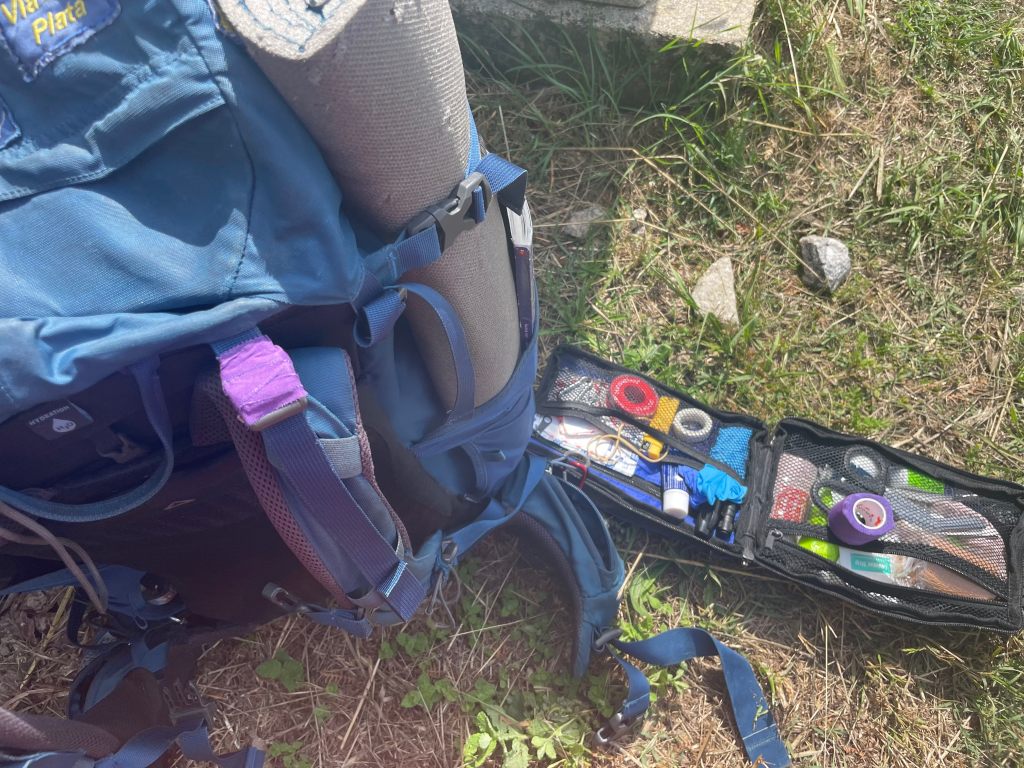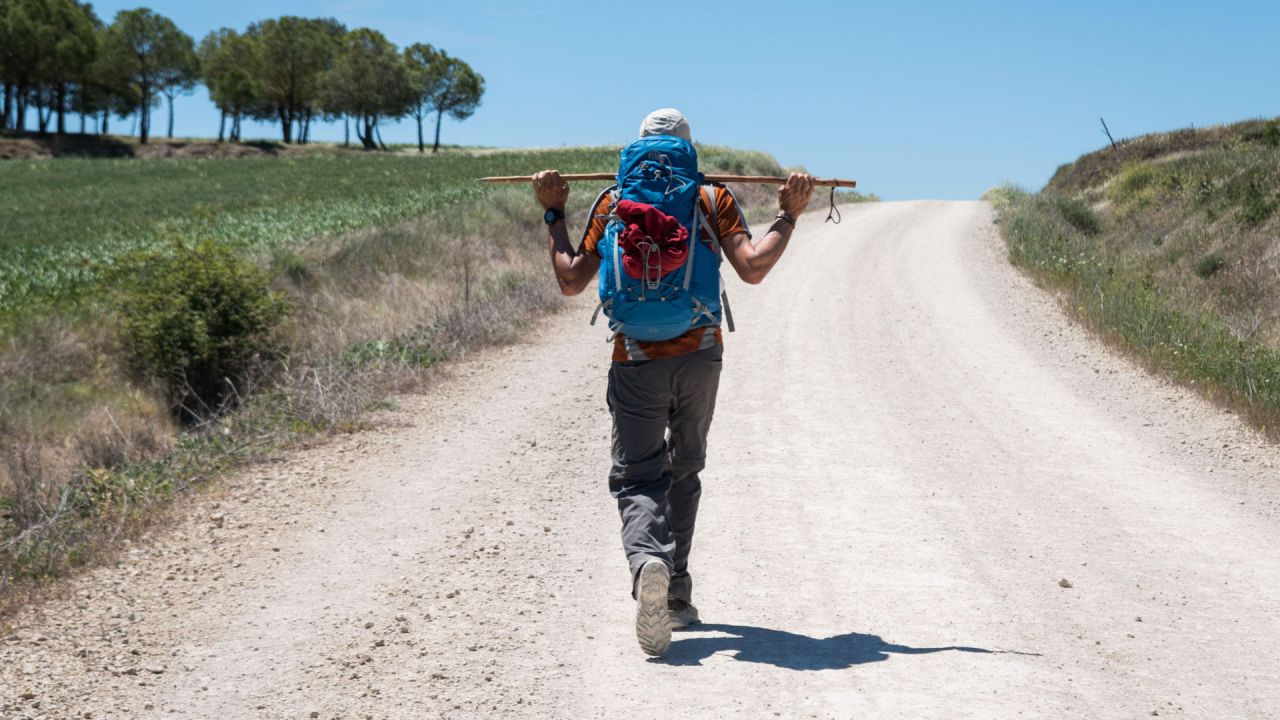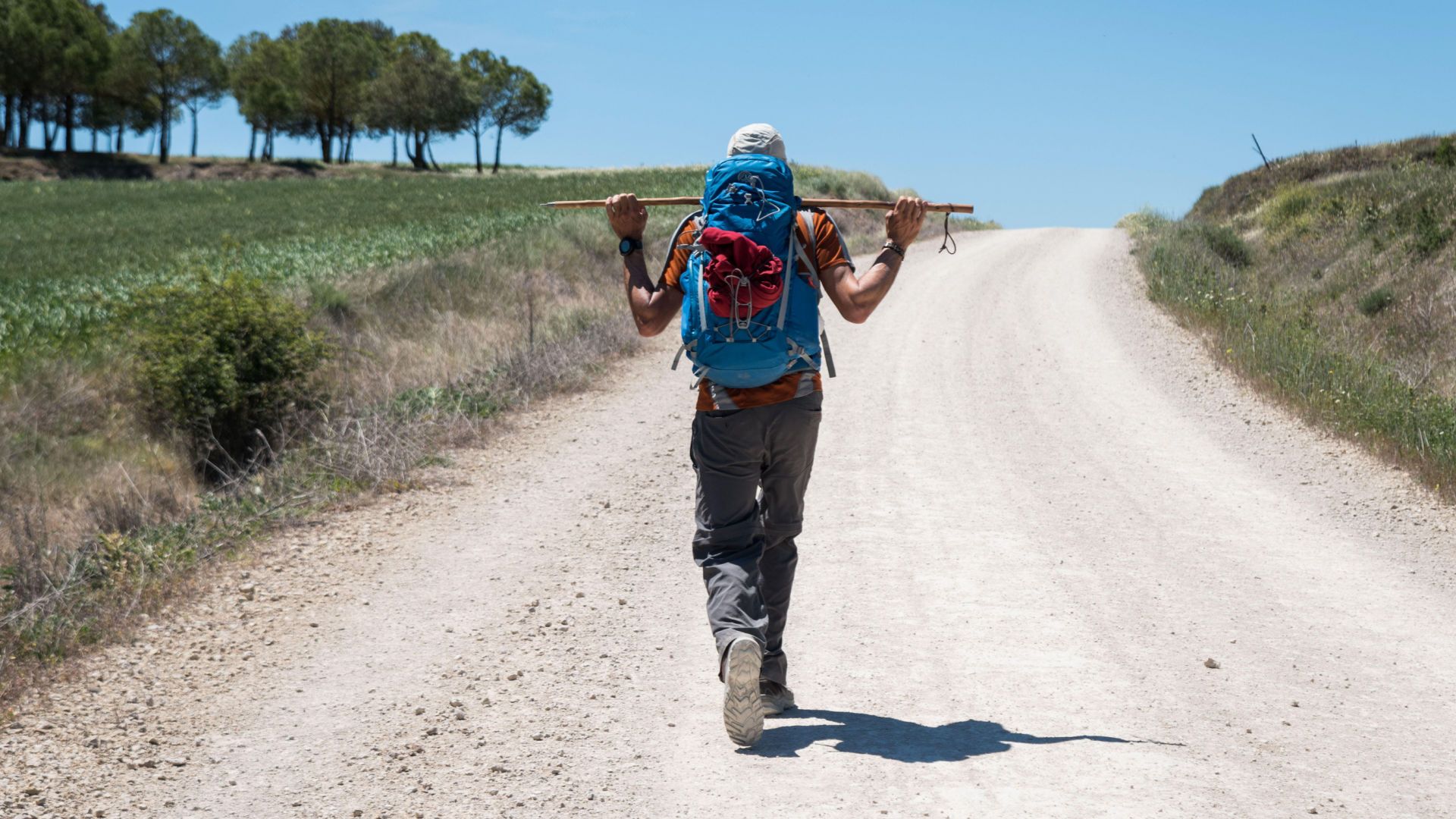I know it’s a tad warmer than usual in southern Europe but let’s not lose our heads. That holiday in stunning Andalusia is still worth it. Admittedly, some mitigating measures are probably worth taking.
With the passion of model railway enthusiasts, we’d discuss what contents should go in the optimal med kit
Since I started taking groups on Caminos, I’ve become – or had to become – a bit of a med kit aficionado. There is always someone with a little niggle or sprain that needs addressing. I’ve also found it’s a great way of meeting people and reconnecting with medieval chivalry: fair maiden, I see your eyes are watering and your nose is red; might I have the honour of providing you with a Tesco hayfever tablet? (Never saw her again; true chivalry there.)
And a med kit doesn’t have to be the sort of backpack-sized thing you see paramedics carrying when they arrive on the scene of a medical drama. Something the size of a generous bathroom wash bag will fit the essentials for the most likely situations that could pop up.
During a recent trip along a Camino, I found myself surrounded by med kit experts. One pilgrim was a paramedic, another was an expeditionary doctor and a third was a GP. We’d end up in long conversations about how best to treat foot-based ailments, what to do if a diabetic starts to go ‘hypo’ – when the level of sugar in their blood drops too low – or if someone comes down with heat stroke.
With the passion of model railway enthusiasts, we’d discuss what contents should go in the optimal med kit. By the end of our Camino together, we’d come up with a med kit acceptable to the 300 Spartans guarding the mountain pass of Thermopylae.
The paramedic told me he usually carries a tourniquet and a Naloxone pen (to treat overdoses) in his med kit. You are unlikely to need those. He also had plasters decorated with characters from Disney’s Frozen film; he had two young daughters being carried on our Camino.

If you are doing any sort of walking and hiking, zinc oxide tape is the silver bullet for pressure points on your feet and any blisters that follow. Don’t buy those expensive Compeed blister kits. Three strips of zinc oxide tape, each half layered over the other armadillo-shell-style will do the job.
Plasters are obvious essentials. Boots has an excellent range of assorted-size collections (and its advantage card really does keep the price down when stocking your med kit). I prefer the simple long plaster strips that you can cut to any size (I’ve carried certain sized plasters for years – only exceeded by the condoms I packed: for emergency water storage, clearly – never quite getting the right cut in the right place to use them).
When it comes to tablets: aspirin and paracetamol, obviously, and Ibuprofen (400mg) for a bit more kick and to counter swelling. Loratadine for hay fever (less likely to make you sleepy than hydroxyzine) and imodium (loperamide) tablets for a dicky stomach and the dreaded runs.
Rehydration sachets are good both post-diarrhoea and for dealing with the effects of heat exhaustion. I always carry a few Lemsip sachets come wintertime (though you could just crush a 650mg paracetamol tablet into hot water mixed with fresh lemon juice).
It’s worth having some of those blue medical gloves stashed in a side pocket – assisting with a nosebleed can get very messy. Stretchy bandages are good to support sore knees and ankles and a tube of Germolene or Savlon antiseptic cream are helpful for nicks and cuts too.
A good med kit doesn’t replace the need to get the fundamental health basics right, which if not followed may well make the contents of your kit moot once you are a slavering wreck on the floor. So, for example, wear a broad-brimmed hat if out in the hot afternoon sun for an extended period (even if it does not look cool) and take on plenty of water. It’s obvious, but people still don’t do it.
When I did the Via de la Plata Camino from Seville during a blistering hot Andalusian summer, I had to carry about four to five litres of water as often there weren’t any villages or water stops on a 30-kilometre stretch. Remember one litre of water weighs a kilogramme, so carrying water on top of everything else gets heavy quickly – which makes you sweat, which makes you thirsty. It’s all about finding a balance. Adjust how much you carry depending on water source availability, temperature, time spent outdoors and distance travelled.
Pay attention to your surroundings and take a few appropriate measures in response and there’s a fair chance you won’t even need to dive into your stellar med kit, its fantastic contents remaining pristinely untouched. Though what’s more likely is you encounter someone who hasn’t taken the right precautions and needs help.
We are all prone to just-in-case-ism. A good friend who was in the British Special Forces will never let me forget how, against his advice, I packed a 1.5kg tent – just in case – and then carried it for 2,000 kilometres across the Iberian Peninsula and never used it. But a discerning med kit makes sense, particularly if you are single, recently divorced, or just appreciate engaging with humankind.
Bon courage and bon voyage. It’s a beautiful world out there, especially with zinc oxide tape.







Comments